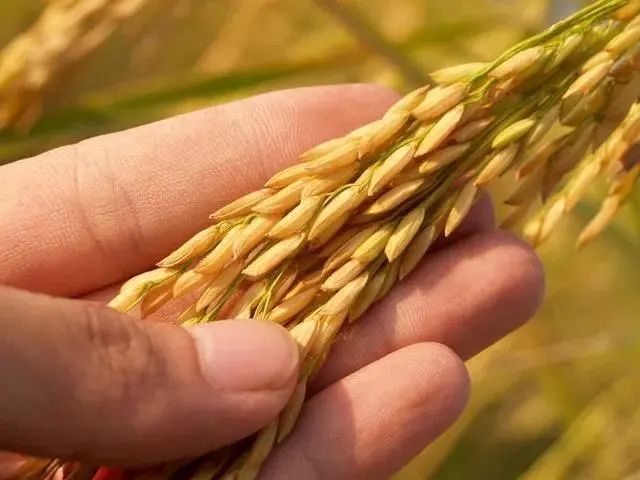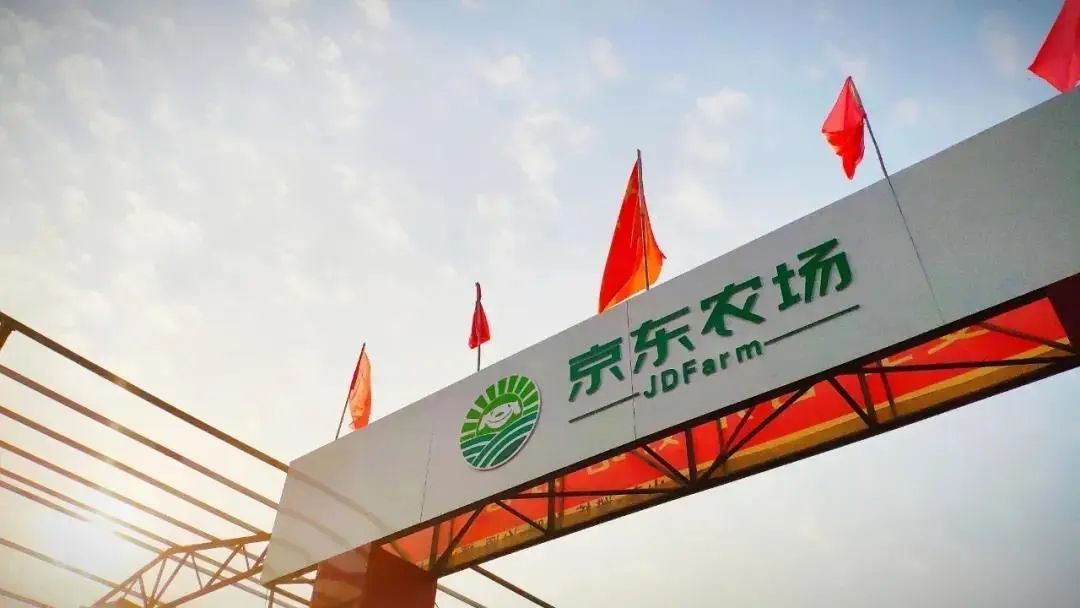The rural revitalization strategy puts "industrial prosperity" in the first place. Industrial prosperity is the primary task and focus of the implementation of the rural revitalization strategy, and is also the foundation and guarantee of rural revitalization. Only by making rural industries bigger, stronger and better can we maintain the vitality of rural economic development and provide inexhaustible impetus for rural revitalization. At present, the current situation of China's agricultural industry is characterized by large but not strong industries, many but not refined agricultural products, weak foundation of modern agriculture, low popularization rate of science and technology, not extensive application of modern agricultural equipment, not obvious linkage between primary, secondary and tertiary industries, weak anti risk ability of agricultural operation, and the backward small farmers' awareness stage of relying on the weather to feed themselves still exists in many regions. In order to prosper the industry, it is necessary to comply with the laws of economic and social development, meet the market demand, rely on rural resources, industrial foundation, cultural history and other advantages, and select rural industries suitable for local conditions. Avoid blindly following the trend and "one thousand people are one side". The following eight industries will be the focus of agricultural economic development and investment in the next five years.
01. Modern characteristic agriculture
China's per capita GDP exceeds nearly 10000 US dollars and is in the stage of accelerating consumption upgrading, which brings important opportunities to the development of characteristic agriculture. On the premise of ensuring food security, combined with the actual development of characteristic agriculture in various regions, the local advantageous characteristic agricultural products will be bigger and stronger, and the brand will be made, which will become an important way to increase farmers' income and employment. China is rich in specialty resources and food categories, has a long and rich diet culture recognized by the world, has 2000 "geographical indication certification trademarks", more than 400 "hometown of specialty", 48 "ecological origin protection" products, and 779 "China time-honored brands". This is a treasure house of Chinese specialties, a treasure house of Chinese agriculture and the history and culture of the Chinese nation! We have the world's largest consumer market, but many of our specialties have not changed from resource advantages to market advantages, and from cognitive advantages to brand advantages. Many specialty products are turning around in the country of origin. Their so-called advantages remain in historical memories, raw materials, base factories, trademarks, podiums, technology and application documents, and even in land relations. Their influence in the consumer market that should play the most role is too low, and many local governments and enterprises beg for food with golden rice bowls. The No. 1 Document of the Central Committee of the CPC clearly stated: to expand and strengthen the advantageous characteristic industries. These include: 1. Implement the action plan for improving the quality and efficiency of advantageous characteristic agriculture, promote the upgrading of industries such as grains and beans, vegetables and fruits, tea and silkworm, flowers and seedlings, edible fungi, traditional Chinese medicine and characteristic breeding, and turn local specialties and small varieties into large industries that drive farmers' income.
2. Vigorously develop characteristic economic forests such as woody grain and oil, timber forests of precious tree species, flowers, bamboo and rattan, forest food and other green industries. 3. Carry out standardized production demonstration of characteristic agricultural products, and build a batch of agricultural products with geographical indications and origin protection bases. Promote the construction of public brands of regional agricultural products, support local governments to build regional brands based on advantageous enterprises and industry associations, and introduce modern elements to transform and improve traditional famous brands.
02. Agricultural productive services
Basically, the modernization of agriculture is the modernization of the way of organization, which is the same all over the world. American farmers only account for more than 1% of the total population of the country, while the employment of related agricultural services accounts for 17% - 20% of the total population. The small population of farmers in the United States is a superficial phenomenon. Behind the developed agriculture in the United States is the developed support system of agricultural industry. There are more than 200 million farmers in China. The average age of agricultural workers is about 50 years old, and the proportion of those over 60 years old is more than 24%. There is an urgent need for comprehensive and quality services. Vigorously develop the agricultural productive service industry, promote the socialization and specialization of agricultural means supply, technology popularization, agricultural machinery operation, epidemic prevention, financial insurance, product classification, storage, transportation and marketing and other services, and provide strong guarantee for the pre production, in-process and post production services of thousands of farmers.
03. Rural e-commerce
The importance and popularity of rural e-commerce need not be repeated. There is great room for development by integrating new agricultural business entities, processing and circulation enterprises and e-commerce enterprises, and promoting online and offline interactive development. It is necessary to connect commerce, supply and marketing, postal services and e-commerce, open up the logistics system from village to township, implement the project of sending express to the countryside, improve the national backbone network of agricultural product circulation, and improve the construction of cold chain logistics infrastructure network such as pre cooling of agricultural product origin. Rural e-commerce is "transforming" rural industries through the Internet. The "upward movement" of agricultural products directly connects the small production in rural areas with the large market. Through e-commerce, the scattered planting, breeding and production in rural areas are connected with the large market demand, and a new market mechanism is established between supply and demand. In this process, e-commerce has also begun to deeply participate in the transformation and upgrading of rural industries. The upward movement of agricultural products contains huge business opportunities. According to the data, it is estimated that in 2020, the trading scale of the fresh food e-commerce market will exceed 310 billion yuan. Establishing a standardized agricultural product system that meets the needs of e-commerce and modern commerce is the only way to optimize agricultural products, which is also a great promotion of e-commerce to agricultural industry.
04. Agricultural products processing industry
Agricultural product processing industry is an industry that connects industry and agriculture, and urban and rural areas. It has wide coverage, high industrial relevance, and strong radiation and driving effect. It is an important growth pole to stimulate rural economic development and increase farmers' employment and income. However, on the whole, the industry is large but not strong, the growth mode is extensive, and the development level is not high. In particular, the initial processing of agricultural products, such as storage, fresh-keeping and drying in the production area, has simple facilities, primitive methods and backward technology, and the losses of agricultural products after production are serious. A large number of agricultural products rotted and deteriorated after delivery, not only breeding mosquitoes and flies, polluting the environment, but also some illegal operators processed moldy agricultural products into food or feed, which became a major hidden danger affecting food quality and safety. On the other hand, with the gradual improvement of our people's living standard, the accelerating pace of life and the change of food consumption concept, people's consumption mode of staple food for three meals a day is changing from home-made to relying heavily on socialized supply. According to a typical survey, about 70% of urban residents and about 40% of rural residents rely on market procurement for their staple foods. At present, the industrialization level of staple food products in China is extremely low. A large number of staple food products rely on small workshops and vendors for production and supply, which makes it difficult to guarantee the quality, safety and health of products. Accelerating the industrialization of staple food has become an urgent livelihood project. At the same time, the market demand for convenience food, leisure food and functional food is also growing rapidly. Therefore, according to market demand and resource conditions, all regions can actively develop agricultural product processing industry suitable for local industrial characteristics, extend the agricultural industry chain, employment chain and benefit chain, and promote the development of agricultural and rural economy and county economy, which is promising.
05. Smart agriculture
Smart agriculture is an important embodiment of agricultural modernization, one of the development directions of modern agriculture, and a huge monitoring, analysis, decision-making and service system of modern agriculture. Smart agriculture is the application of Internet of Things technology to traditional agriculture, and the use of sensors and software to control agricultural production through mobile platforms or computer platforms, making traditional agriculture more "smart". In a broad sense, smart agriculture also includes agricultural e-commerce, food traceability and anti-counterfeiting, agricultural leisure tourism, agricultural information services and other aspects. Smart agriculture is an advanced stage of agricultural production. It integrates emerging Internet, mobile Internet, cloud computing and Internet of Things technologies, and relies on various sensor nodes (environmental temperature and humidity, soil moisture, carbon dioxide, images, etc.) deployed on agricultural production sites and wireless communication networks to achieve intelligent perception, intelligent early warning, intelligent decision-making Intelligent analysis and expert online guidance provide accurate planting, visual management and intelligent decision-making for agricultural production. Jingdong Group's "Jingdong Farm" is a practitioner and leader of smart agriculture. In 2019, it launched the "Hundred and Ten Million" Landmark Premium Product Plan: it openly solicited 100 landmark products nationwide to be included in the project of Jingdong Farm, and provided about 30 million yuan of system software use incentives for these agricultural products enterprises to achieve the production and construction goal of 10000 mu of related landmark products. 在2019年10月23日京东农场丰收节暨2020年数字农业战略发布会上,京东农场与洛阳农发公司合作共建伊川小米项目,按照京东农场管理标准进行科学种植,规范生产,提升伊川小米品质、建立标准化,开拓销售渠道,共同打造生态农业、数字农业、可持续化的绿色品牌农业。=
在2019年10月23日京东农场丰收节暨2020年数字农业战略发布会上,京东农场与洛阳农发公司合作共建伊川小米项目,按照京东农场管理标准进行科学种植,规范生产,提升伊川小米品质、建立标准化,开拓销售渠道,共同打造生态农业、数字农业、可持续化的绿色品牌农业。=
06. Agriculture&Industry
The faster the pace of modernization, the stronger the people's yearning for the original ecological environment and local. Leisure agriculture, rural tourism Leisure agriculture and rural tourism have the natural attributes of connecting urban and rural element resources, integrating rural primary, secondary and tertiary industries, and have huge market space. Give full play to the unique advantages of various types of material and intangible resources in rural areas, and promote the deep integration of agriculture, forestry, tourism, education, culture, health care and other industries by using the "tourism+", "ecology+" and other models. Rural collective economic organizations are encouraged to establish rural tourism cooperatives or jointly run rural tourism enterprises with social capital. From the perspective of urban population, with the improvement of rural infrastructure and the strengthening of ecological environment construction, the beautiful pastoral scenery, fresh air and good living environment will attract a large number of urban people to return to the countryside for pension, health care, leisure and tourism, which provides a broad space for the development of rural life services. The income data of rural tourism has been booming in the past two years. In 2019, leisure agriculture and rural tourism in China received more than 2.2 billion tourists, with an operating income of more than 440 billion yuan, 6.3 million farmers, and 5.5 million farmers benefited. At present, the enthusiasm for developing leisure agriculture and rural tourism is very high in various regions. The momentum of blind development is strong, and the problem of homogenization is prominent. There are many vicious competitions and loss making operations. The development of leisure agriculture and rural tourism requires unique resource endowments and basic conditions, a clear understanding of your market needs and target groups, creative design and clever marketing. Therefore, all regions should study carefully and make rational choices in their development. The service market for rural areas is also very large, and the rural life services such as old-age care industry, goods maintenance industry, wholesale and retail industry, e-commerce, finance and insurance are promising.
07. Rural traditional industries with characteristics
China has a long history, industrious and intelligent people, and colorful ethnic groups. It has cultivated many traditional industries with regional characteristics, such as traditional handicrafts such as bamboo weaving, batik, paper cutting, wood carving, stone carving, silver decoration, and national costumes, and traditional food processing industries such as brine products, sauce products, bean products, bacon, sausage, ham, and so on, With strong regional characteristics, it bears the memory of history, inherits the national culture and has unique industrial value. Therefore, we should well inherit, protect, develop and utilize these products, give play to the brand effect, and improve the charm and efficiency of "local manufacturing", which can not only meet people's increasingly diversified and characteristic market needs, cultivate local rural local industries, but also protect traditional skills and inherit national culture.
08. Rural environmental protection industry
The environmental protection problem in rural areas is "short board in short board". Therefore, the political tasks of targeted poverty alleviation and pollution prevention and control are expected to become the fields of targeted policy and financial support in the future. Biomass resources such as rural domestic garbage, livestock manure, crop straw and other biomass resources are up to billions of tons every year in China. At present, a considerable proportion of them are not utilized as resources, which not only wastes resources, but also becomes an important source of pollution in rural areas. In addition, the lag of rural environmental infrastructure construction is also prominent. The country has released the "13th Five Year Plan" for national rural environment improvement and launched the three-year action plan for human settlements improvement. Rural environmental protection industry has increasingly become a highlight of investment. In terms of comprehensive improvement of rural environment, it includes several major aspects: rural residents, water supply, sewage, water source treatment, solid waste sanitation, photovoltaic and bulk coal replacement in energy; At the agricultural level, such as the reduction of chemical fertilizers and pesticides, the treatment of livestock and poultry manure, the "five materials" of straw, water-saving irrigation and farmland restoration. Take the straw processing industry as an example. The straw of corn, wheat, rice, rape and other crops is more than 700 million tons every year. The discarded straw can be used to produce straw boards with low cost, environmental protection, ecology and formaldehyde free. For the country, the development of straw boards can reduce the smoke and dust brought by farmers burning straw, which is conducive to the management of PM2.5. It is also of great significance to ease the constraints of wood and other resources and reduce environmental pressure; For the village, if the village directly invests in the construction of straw plate factory, the cost of the related enterprises in the purchase of raw materials can be greatly reduced, and together they can be supported by the national policy. There are still many business opportunities in the environmental protection industry. Environmental protection scrutiny is a high topic at present. In the future, the environmental protection industry will develop rapidly. The market prospect of choosing environmental protection industry to start a business is not worth worrying about.
Content source: agricultural industry observation



